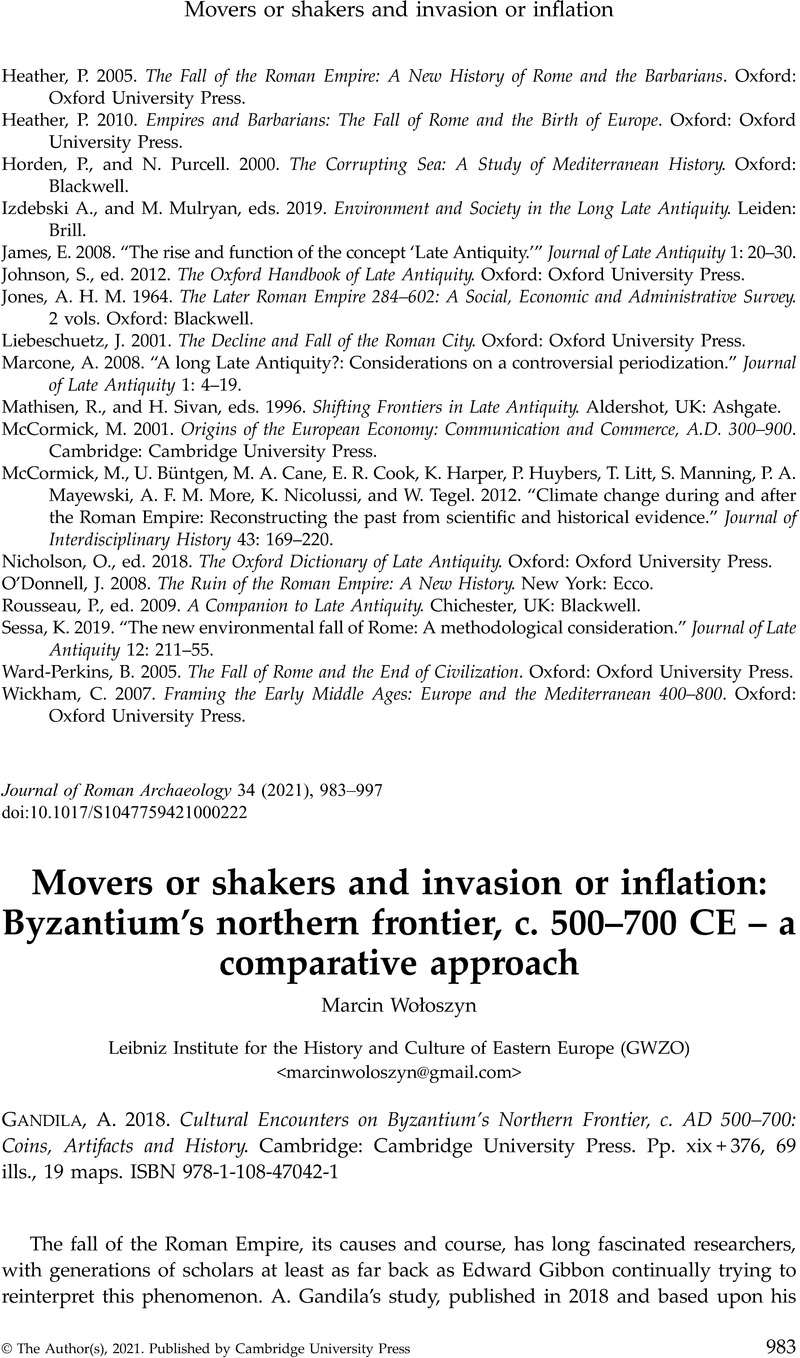No CrossRef data available.
Article contents
Movers or shakers and invasion or inflation: Byzantium's northern frontier, c. 500–700 CE – a comparative approach - A. Gandila 2018. Cultural Encounters on Byzantium's Northern Frontier, c. AD 500–700: Coins, Artifacts and History. Cambridge: Cambridge University Press. Pp. xix + 376, 69 ills., 19 maps. ISBN 978-1-108-47042-1
Review products
Published online by Cambridge University Press: 29 July 2021
Abstract

- Type
- Book Review
- Information
- Copyright
- Copyright © The Author(s), 2021. Published by Cambridge University Press


